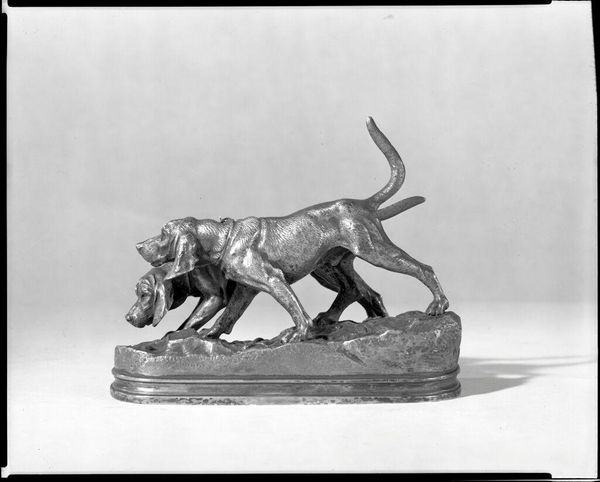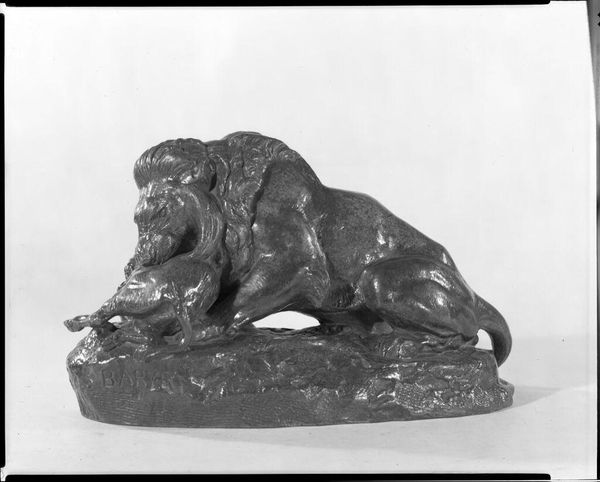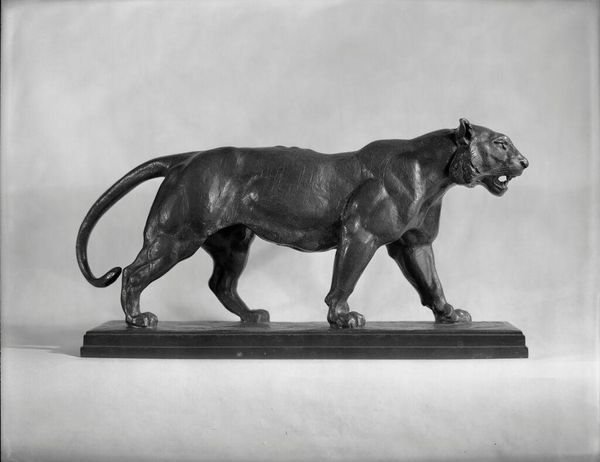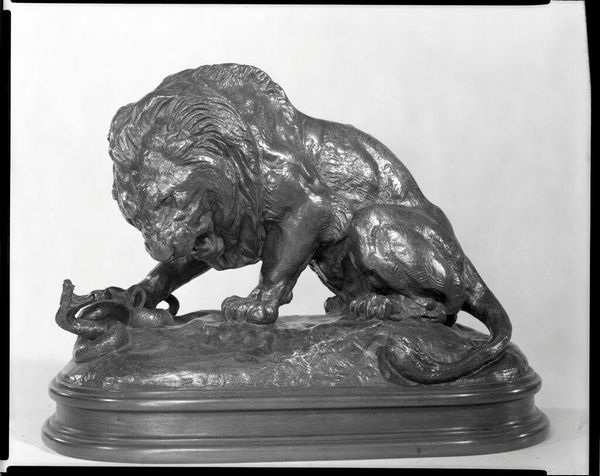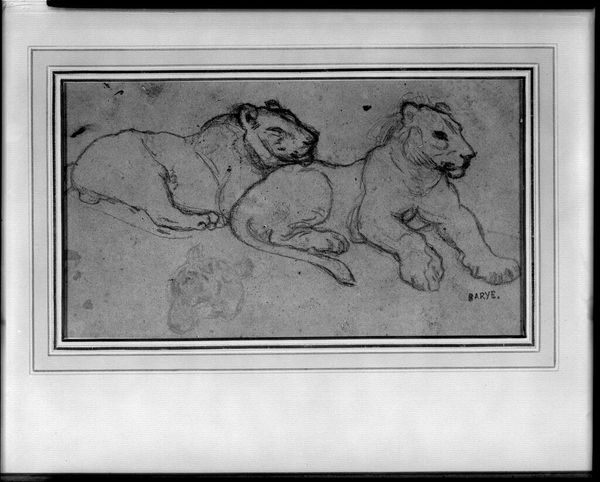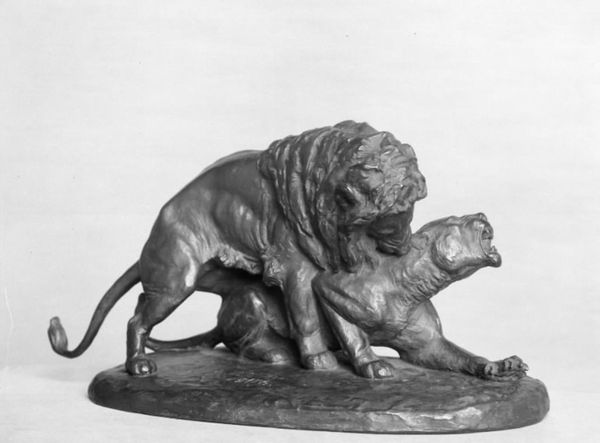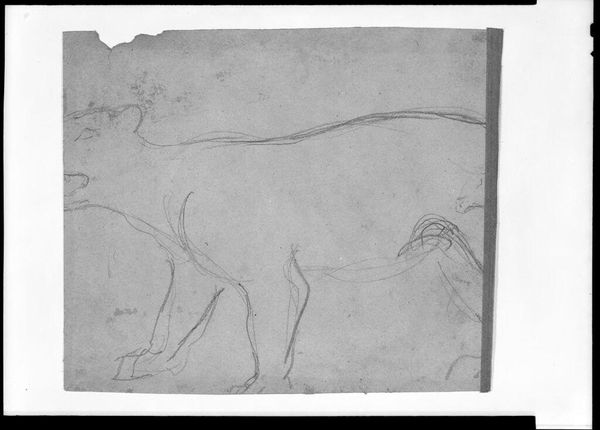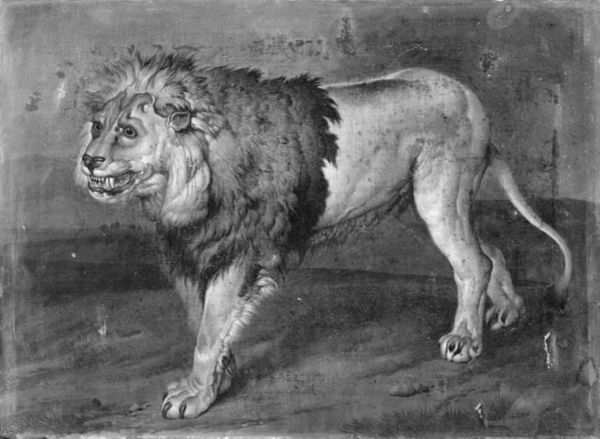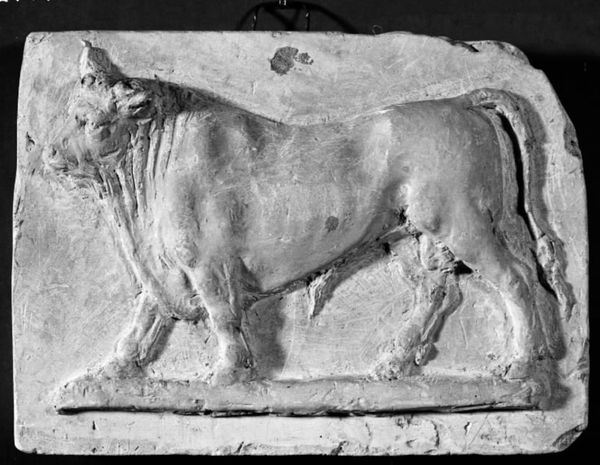
Dimensions: 19.4 Ã 39.7 Ã 4.6 cm (7 5/8 Ã 15 5/8 Ã 1 13/16 in.)
Copyright: CC0 1.0
Curator: Here we have Antoine Louis Barye’s “Walking Lion,” a bronze relief sculpture housed here at the Harvard Art Museums. Editor: It strikes me as… melancholic. The lion strides forward, yes, but with such a heavy, world-weary air. Curator: Barye, working in 19th-century France, often depicted animals with a Romantic sensibility, reflecting the era’s fascination with nature and its power. Lions, of course, had a long association with imperial power. Editor: Interesting. For me, it’s the surface texture that speaks. All those minute undulations in the bronze suggest life, but a life burdened, almost fossilized. The lion becomes this symbol of faded glory or some lost vitality. Curator: Indeed. Barye's work was celebrated for its realism, reflecting a broader movement in art towards observed detail. Editor: Which maybe underscores the sadness. The artist captures the king of beasts not in some triumphant pose, but in the middle of what looks like an exhausted walk, almost as if questioning his role. Curator: That tension you perceive is exactly where art can open up a dialogue about power, representation, and our own place in the world. Editor: Precisely. It’s a piece that stays with you, a growl that fades into a sigh.
Comments
No comments
Be the first to comment and join the conversation on the ultimate creative platform.
